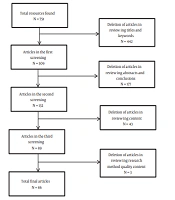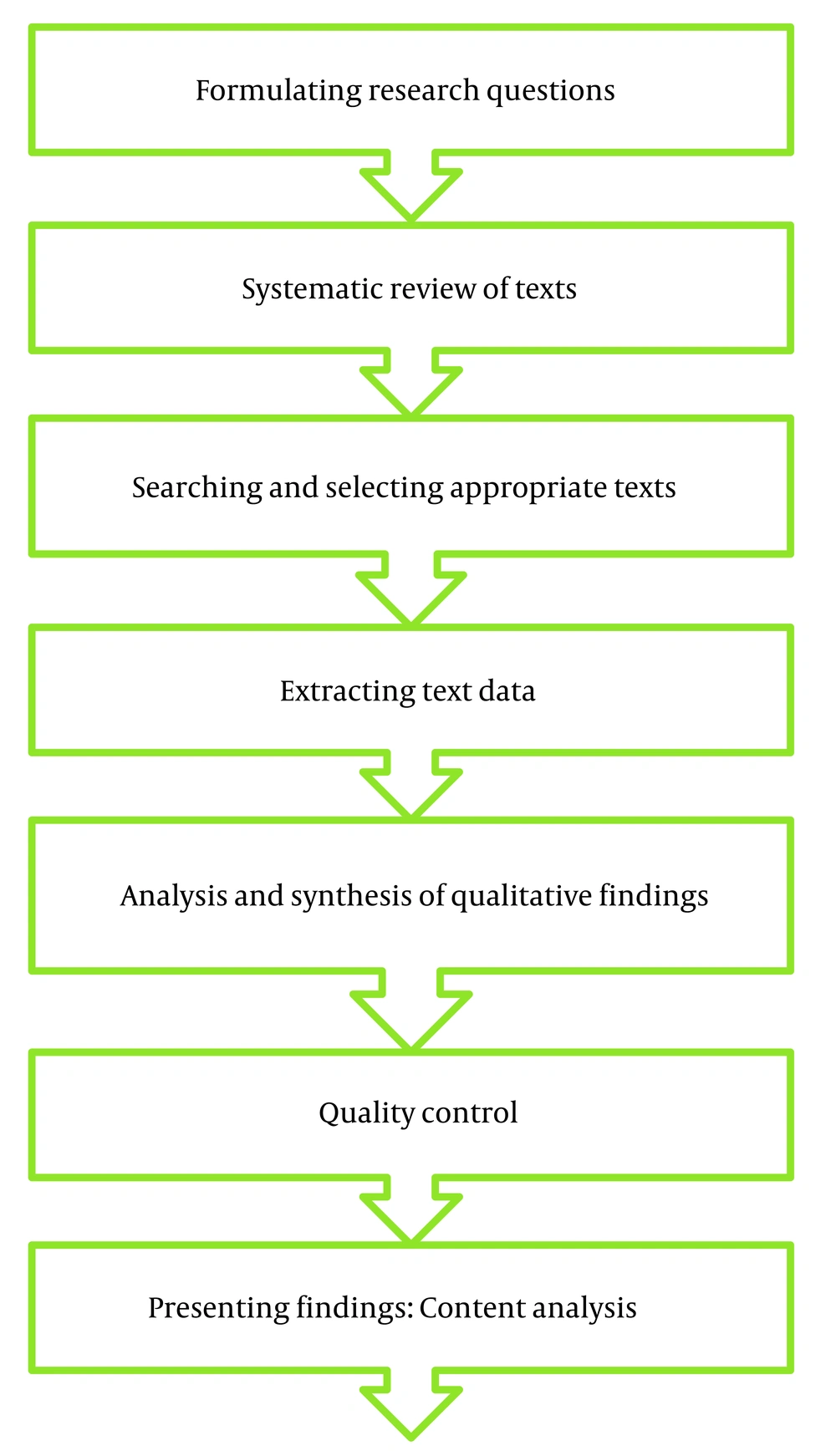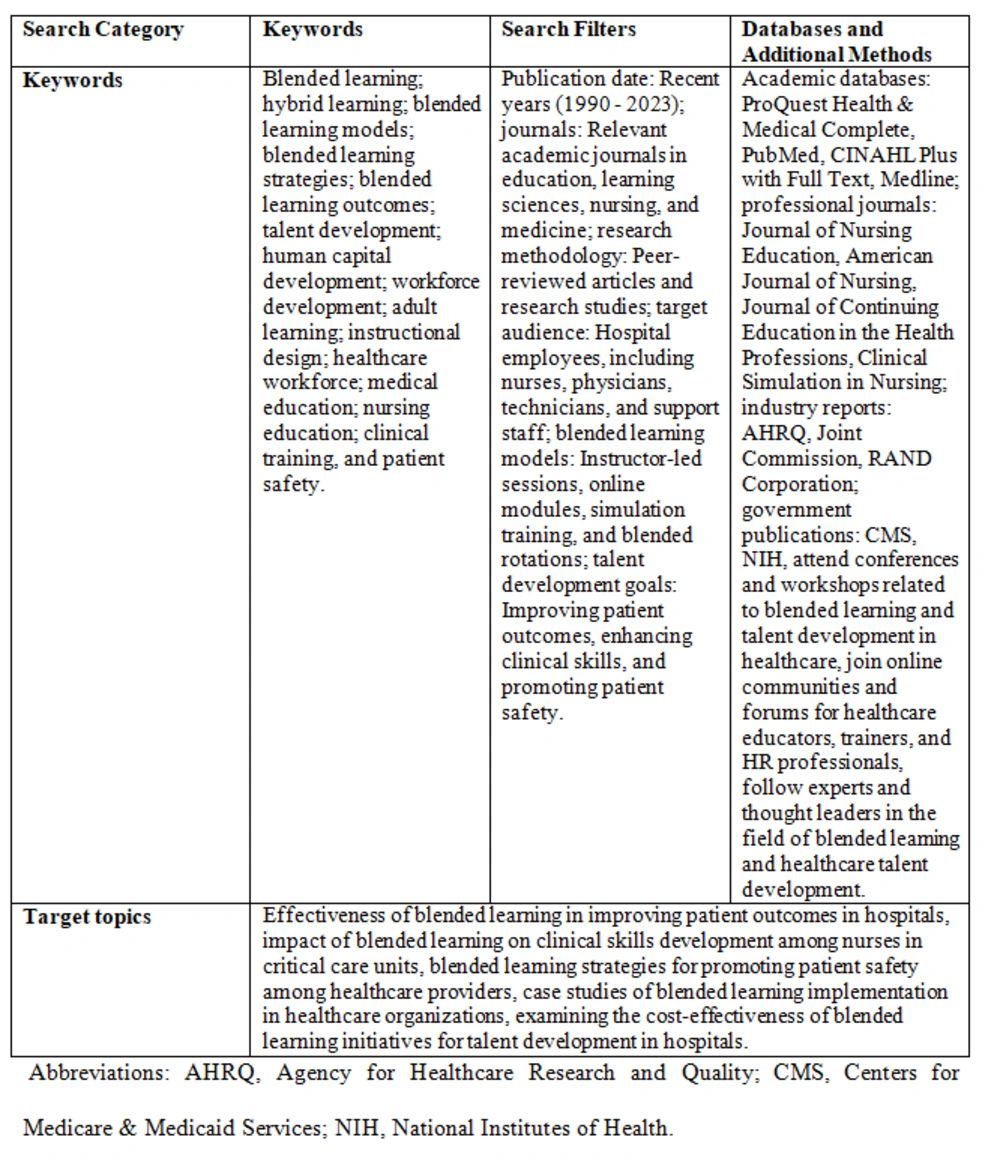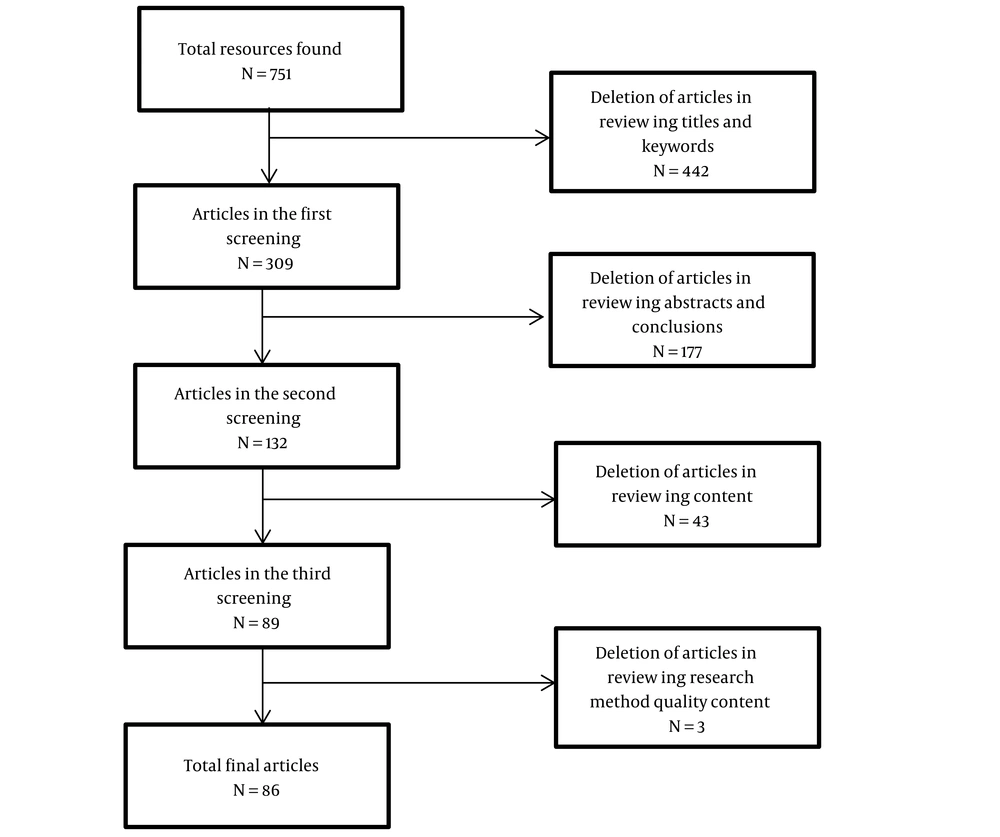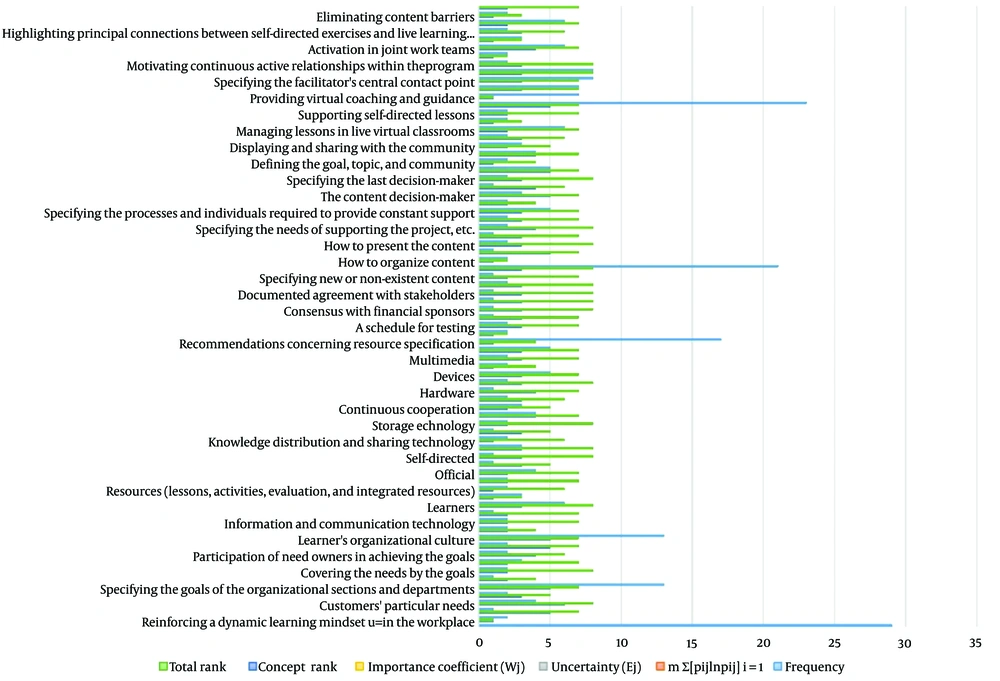1. Background
In December 2021, China's “14th five-year plan” for national informatization proposed the construction of an integrated Internet + education cloud network to build a ubiquitous online learning space. In the same year, the 5G application “sailing” action plan called for increasing the application of 5G in smart classrooms and combining augmented reality/virtual reality (AR/VR), holographic projection and other technologies to realize scene-based interactive teaching and create immersive classrooms (1, 2). A smart classroom is characterized by natural human-computer interaction and is an enhanced classroom realized by technologies such as mobile communication, cloud computing, big data, and more (3). Smart classrooms, as an important part of the process of implementing intelligent teaching, are characterized by abundant resources, extensive interaction, a combination of virtual and real-life environments, and rich functions, thereby opening up a new field for the creation of teaching situations (4). Such classrooms rely on the panoramic data recording and analysis of the teaching process in the form of a “cloud + terminal”, the visual presentation of and feedback on results, the provision of digital teaching tools, and the establishment of a decision-making basis for teaching and learning.
With the development and construction of smart classrooms, research on blended teaching has emerged. The research on online and offline hybrid teaching models conducted by foreign scholars mainly focuses on classroom technology implementation, teaching model construction, and teaching service provision (5); studies conducted by domestic scholars, however, are mainly aimed at the construction of new teaching models and the enrichment of teaching methods (6-8).
Except for the quantitative and rarely qualitative studies conducted in the country, there are also numerous gaps in the foundation of talent-related research (9). In line with the training and talent development and besides in-person training, various private and public organizations attempt to present part of their training as non-in-person and often electronically, with the presumption they have from it. The effectiveness and quality of learning through an electronic environment highly depend on the quality of its program design (10).
In today’s dynamic and competitive healthcare environment, hospitals face the constant challenge of developing and retaining a highly skilled workforce (11). Talent development programs play a crucial role in equipping hospital employees with the knowledge, skills, and behaviors necessary to provide exceptional patient care and contribute to organizational success (12). Traditionally, talent development programs have relied on either face-to-face training or online learning (13). However, these traditional approaches have limitations in terms of flexibility, accessibility, and cost-effectiveness (14).
Blended learning emerged as a promising alternative to traditional approaches (15). Blended learning models integrate the interactive and personalized aspects of in-person instruction with the flexibility and accessibility of online learning (11). This combination of approaches provides learners with a more engaging and effective learning experience that caters to their individual learning styles and preferences (16).
Despite the growing popularity of blended learning, there is a need for a systematic approach to synthesize and organize existing research on blended learning models for hospital employee talent development (17). This is where meta-synthesis, a research methodology that involves synthesizing qualitative and quantitative research findings, can be a valuable tool (18). This article presents a meta-synthesis of existing research on blended learning models for hospital employee talent development.
The rapid pace of technological advancements and the evolving nature of healthcare have placed significant demands on hospital employees (19). To meet these demands, hospitals need to invest in talent development programs that foster continuous learning and professional growth (20). Blended learning offers a promising approach to address these challenges and enhance the effectiveness of talent development programs in hospitals (21). The proposed blended learning model is designed to address the specific needs of hospital employees and the unique challenges of the healthcare environment.
This study synthesized qualitative evidence of blended learning for talent development in hospitals. The authors believe that, by combining the findings of the studies, a comprehensive design can be developed, which can be used as a foundation for hospital development, changing employee training policies, designing and reorganizing employee teaching, and finally, employees’ achievement of talent development outcomes.
In this regard, the specific research questions were as follows:
(1) What are the indices of blended learning design for talent development?
(2) What are the components of blended learning design for talent development?
(3) What are the dimensions of a comprehensive design of blended learning for talent development in hospital employees?
2. Objectives
It is well known that the traditional teaching mode is mainly aimed at imparting knowledge, which is characteristically teacher-centered and emphasizes the teacher’s dominant position and leading role, making it an insufficient method of recording students’ learning process and cultivating their cooperation and communication skills. Compared to the advantages of traditional teaching models, those of smart models are mainly reflected in the following aspects. Firstly, the configuration of information hardware and software is complete, the teaching environment is better, and the learning atmosphere is more relaxed. Secondly, the learning platform can help teachers manage their courses and engage in real-time interactions through random roll calls and classroom tests. Thirdly, a smart model focuses on generating student knowledge so that the presentation and pedagogical approach to content are more diversified, encouraging students to engage in adaptive learning and participate in cooperative group teaching (22, 23).
Additionally, VR is receiving increasing attention in hospital staff education and is being used to teach many hospitality concepts, including leadership, communication, decision-making, critical thinking, inclusion, health assessment, and disaster classification (24). By using virtual simulation technology to build a virtual operating environment and provide students with multisensory simulation (25), real-time interactions will help solve difficulties in implementing experimental projects, such as high costs, high levels of risk, and difficult operations. In addition, researchers have incorporated case-based learning (CBL) and peer-assisted learning (PAL) into the teaching design process (26). In CBL, teachers create learning situations with typical cases, and students read cases and collect data to learn through scenario simulation, carry out discussion and analysis, and synthesize knowledge related to various cases to cultivate clinical thinking ability. Peer-assisted learning is a kind of learning mode in which peers support and assist each other, which plays a positive role in improving students’ academic performance and developing social emotions (27).
Basic hospital staff courses, such as nursing, are some of the most fundamental ones. Therefore, in the teaching process of basic courses, constructing a blended learning model for the integration of science, education, and collaborative learning is a necessary and effective way to develop talent. Based on the explanations provided in this study, the researchers have responded to research questions, including “what are the dimensions, components, and indicators of the combined learning plan for the talent development of hospital staff?”.
In summary, this study aimed to recognize the dimensions, components, and indicators of the blended learning method in the hope of improving staff talent development.
3. Methods
Research synthesis is the conjunction of a specific set of literature review characteristics and attempts to combine empirical research to create generalizations. In other words, it seeks generalizations with definite limits (28).
In this study, the meta-synthesis approach was used. According to Zimmer (29), a meta-synthesis is a qualitative study incorporating data from other qualitative studies on the same topic. The researchers integrate the findings of various qualitative studies in this process, resulting in a whole that is more than the sum of its components.
Different and relatively similar methods have been proposed to implement meta-synthesis. The qualitative meta-synthesis procedures of Sandelowski and Barroso (30) were applied in this study.
3.1. Meta-synthesis Steps
Meta-synthesis requires that the researcher reviews the study document in a precise and in-depth manner and synthesizes previous research studies. Sandelowski and Barroso have developed a seven-step model for this purpose (31) (Figure 1).
The seven steps of meta-synthesis (Sandelowski and Barroso (31))
3.1.1. Step 1: Formulating Research Questions
In meta-synthesis, the first step is the formulation of the research question. The researcher can use different strategies, such as population, intervention, comparison, outcome, and study (PICOS) design and setting, perspective, intervention/phenomena of interest, comparison, and evaluation (SPICE). In this study, the researchers used the four-question strategy or W3H (29) to formulate the research question as follows:
(1) The first question: “What?” This question covers the aim of the research. The purpose of this study is to develop a blended learning model for talent development in Kasra General hospital.
(2) The second question: “Who?” This question specifies the research community or population.
(3) The third question: “When?” This question determines the time scope of the research.
(4) The fourth question: “How?" This question represents the method used to collect research data.
3.1.2. Step 2: Systematic Review of Texts
The research statistical population consisted of all scientific documents and articles, databases, and domestic and foreign publications in the field of blended learning within 1990 to 2023. The two main keywords of “blended learning” and “talent development” were used for searching in credible domestic scientific databases, such as ProQuest Health & Medical Complete, PubMed, CINAHL Plus with full text, Medline, professional journals: Journal of Nursing Education, American Journal of Nursing, Journal of Continuing Education in the Health Professions, Clinical Simulation in Nursing, industry reports: Agency for Healthcare Research and Quality (AHRQ), Joint Commission, RAND Corporation, Government publications: Centers for Medicare & Medicaid Services (CMS), National Institutes of Health (NIH, IranDoc, the Country’s Publications, Noormags, Civilica, and ElmNet databases, National Library websites, and also foreign valid information and citation databases, such as Google Scholar, Taylor & Francis, Emerald, ScienceDirect, Scopus, Springer, and the Institute of Electrical and Electronics Engineers (IEEE). As a result of the performed search, a total of 751 articles, books, and studies were found in this field (Table 1).
3.1.3. Step 3: Screening and Selecting Appropriate Qualitative Studies
In the third step, after collecting articles and texts using keywords, some texts should be deleted according to different criteria. Table 2 shows the criteria for the inclusion and exclusion of articles and texts in this study. Studies screening was performed by one author based on inclusion and exclusion criteria (predetermined objective criteria). However, two researchers conducted the eligibility evaluation (full-text assessment) simultaneously and independently. Any disagreement between researchers was discussed and resolved.
| Inclusion Criteria | Exclusion Criteria |
|---|---|
| Articles/research that have been published in academic journals | Reports of quantitative research |
| PhD theses | Questionnaire and survey studies |
| Book chapter | Theses below the PhD level |
| Studies containing primary and original data | Reports of secondary research |
| Studies with scientific sampling and defined samples | Pseudoscientific or unverified research Report |
| Reports from primary qualitative research | Reports that their data are trustworthiness |
| Studies that describe the characteristics of blended learning models for hospital employee talent development | Articles and studies not written in English and Persian |
| Articles and studies written in English and Persian | 1990 > |
| 1990 ≤ | |
| 2023 ≥ |
Inclusion and Exclusion Criteria of Articles and Texts
4. Results
4.1. Step 4: Critical Appraisal of Studies and Extracting the Required Data from Final Selected Studies
The remaining papers from the previous phase were assessed for quality in this step, and the final studies were identified for inclusion in the meta-synthesis. Evaluating qualitative research can be difficult because it cannot be treated as a single field due to diverse approaches and methodologies (32). This stage aims to exclude papers and research that might be methodologically suspect; as a result, certain studies might be removed. In the present study, the critical appraisal skills program (CASP) was used to critically evaluate the quality of studies. Finally, after evaluating articles and studies based on indicators (CASP), 86 articles and studies were selected and included in the meta-synthesis. Figure 2 shows this process.
Regarding methodological quality, six studies did not have the third criterion, eight cases did not have a clear fourth criterion, nine cases did not meet the fourth criterion, and two cases did not meet the fifth criterion. Additionally, the sixth criterion was not clear in 20 cases, and 11 cases did not have the sixth criterion. In addition, four items about the seventh criterion were not clearly explained; three cases did not meet the seventh criterion, and one case did not meet the eighth criterion. Finally, out of the total cases, 55 studies had excellent value and rigorous (++), and 31 studies had good value and rigorous (+) (Table 3).
| Quality Criteria | Yes | Not Clear | No | |
|---|---|---|---|---|
| 1 | Was there a clear statement of the aims of the research? | 86 | — | — |
| 2 | Is a research methodology (qualitative) appropriate? | 86 | — | — |
| 3 | Was the research design appropriate for addressing the aims of the research? | 80 | — | 6 |
| 4 | Was the sampling strategy appropriate to the aims of the research? | 69 | 8 | 9 |
| 5 | Was the data collected in a way that addressed the issue of the research? | 84 | — | 2 |
| 6 | Has the relationship between the researcher and participants been adequately considered? | 55 | 20 | 11 |
| 7 | Have ethical considerations been considered in the research? | 79 | 4 | 3 |
| 8 | Was the data analysis sufficiently accurate and rigorous? | 85 | 1 | — |
| 9 | Are the findings clearly reported? | 86 | — | — |
| 10 | (Value and accuracy of research) a | 55 ++ | 31 + |
Distribution of Selected Studies According to 10 Quality Criteria
In this step, in addition to evaluating the studies, data such as author/authors (publish year), country, language, discipline/context of the study, study methodology (qualitative research method and data collection methods and techniques), study participants (number and type), and purpose of the research (the focus of the study) were extracted, summarized, and coded from the final selected studies (Table 4).
| The Title of the Research | Year of Publication | Type of Document | Open Codes |
|---|---|---|---|
| Effects of an interaction and cognitive engagement-based blended teaching on obstetric and gynecology nursing course (8) | 2022 | Article | Supporting resources and technological infrastructures and creating attitude, willingness, and motivation |
| Application research of smart classroom teaching mode in teaching innovation of nursing undergraduate courses (22) | 2021 | Article | Contextualization to create an accurate perception of LMS, accessibility, and diversity of methods |
| Blended learning vs traditional teaching: The potential of a novel teaching strategy in nursing education - a systematic review and meta-analysis (6) | 2022 | Article | Strategy training and awareness of it, access to resources, and changes in educational methods |
| Blended learning for faculty professional development incorporating knowledge management principles (33) | 2016 | Dissertation | Learning and teaching, support, creating professional development opportunities, driving force, creating motivation, employee management, learner management, proper employment of technical support employees, identifying appropriate professional advancements for managers, and identifying other smart teaching operating systems that might provide more cost-effective solutions for the organization |
| The importance of training and development in employee performance and evaluation (34) | 2017 | Article | Physical infrastructures, supporting technology learning, training, educational redesign and reviewing the role of blended learning, organization management, providing support and resources, new approaches to research and development, and strong IT infrastructure |
| Online, face-to-face, or blended learning? Faculty and medical students' perceptions during the COVID-19 pandemic: A mixed-method study (35) | 2022 | Article | Professional development, infrastructures and resources, research, and evaluation |
Selection of Data Extracted from the Selected Works in the Meta-synthesis Method
4.2. Step 5: Analysis and Synthesis of Qualitative Findings
Meta-synthesis involves a complex and subjective process of data analysis, where the interpretation of findings is significantly influenced by the researcher’s background, expertise, and the specific goals of the study. Different researchers employ varying approaches to data analysis, ranging from grounded theory-based analysis (36) to coding-based analysis (37); nevertheless, others prioritize synthesizing metaphors from the outset (38). Paterson (38) acknowledges the versatility of qualitative analysis methodologies in meta-synthesis.
This study employed inductive coding, which involves a systematic process of carefully reading and analyzing the studies, followed by open coding, axial coding, and selective coding to identify patterns and themes. This approach allowed for the development of a comprehensive understanding of the key findings from the selected studies (Table 5).
| Categories and Concepts | Code |
|---|---|
| Specifying learning needs | |
| Extracting business needs | Creating and motivating a dynamic learning mindset in the workplace/suppliers’ particular needs/customers’ particular needs |
| Specifying learning objectives | Specifying development goals concerning the organization’s human resources/specifying goals concerning employee occupational functioning/specifying the goals of the organizational sections and departments/specifying organizational educational goals |
| Specifying the relationship between learning objectives and needs | Covering the needs by the goals/specifying the duration of satisfying the needs/participation of need owners in achieving the goals/specifying the required resources and capacities |
| Specifying organizational preparedness | Learner’s organizational culture/organizational support/technology tools and infrastructures/preparation of the educational team/learners’ preparation |
| Learning campaign elements | |
| Specifying learning blocks | Specifying educational strategies/specifying resources (lessons, activities, evaluation, and integrated resources)/specifying the learner’s experience (where and when learners and content interact) |
| Specifying educational techniques | Official/unofficial/self-directed |
| Specifying information technology | Various communication technology/knowledge distribution and sharing technology/cooperation technology |
| Learners’ communities and learning individuals | Simultaneous cooperation/continuous cooperation/extension of continued cooperation |
| Learning proposal | |
| Technology recommendations | Hardware/software/devices |
| Content development recommendations | Recommendations concerning the supply place (internal or external supply)/recommendations concerning multimedia/recommendations concerning creating new content or developing and updating existing content/recommendations concerning resource specification |
| Pilot test recommendations | The project elements (e.g., participants)/ a schedule for testing/required budget for testing/how to evaluate the project (e.g., criteria and method) |
| Budget recommendations | Creating consensus with financial sponsors/proving the program value to customers/creating a documented agreement with stakeholders |
| Content strategy | |
| Content sources | Specifying the existing content/specifying new or non-existent content/specifying from which sources to receive or create new content |
| Content structure | Specifying how to organize content/specifying what content is prioritized? (Is any part of content more important than the other?)/specifying how to present the content/specifying how individual content sources are placed into the big picture |
| Content workflow | Specifying what is required to support the project, development, delivery, etc. of the content/specifying what is required to maintain and update the content/specifying which processes or individuals must be included to guarantee constant support/specifying the content lifecycle (how much does each resource need to be reviewed and updated) |
| Content governance | Specifying who should decide on content/specifying who has the authority to make changes/specifying who makes the last decision/specifying who manages the communication stream |
| Content management planning | Defining the goal, topic, and community/searching channels and selecting content/displaying and sharing with community/saving, preserving, and archiving |
| Facilitation model | |
| Facilitating a blended experience | Managing lessons in live virtual classrooms/adjusting social experiences/supporting self-directed lessons/providing virtual coaching and guidance |
| The role of a facilitator | Facilitators’ communication with learners/creating a learner-oriented environment |
| Creating motivation in learners | Placing the facilitator at a central contact point (humanizing the digital learning experience)/providing feedback regarding knowledge and skill evaluations, identifying learner’s work and progress/motivating continuous active relationships within the program/intrinsic motivation |
| Creating collaboration opportunities for learners | Membership in social groups/activation in joint work teams/giving a teacher’s role to learners/designing a learning event |
| Content and technology management | Highlight principal connections between self-directed exercises and live learning events/eliminating technology barriers/eliminating content barriers/rescheduling the program’s principal communications. |
Categorization of Findings and Studies Used in the Blended Learning Model for Talent Development
4.3. Step 6: Maintaining Quality Control (Rigor and Trustworthiness)
The researchers in this study demonstrated a strong commitment to upholding the credibility of their meta-synthesis study by incorporating a comprehensive set of strategies aligned with the Maxwell and Kvale criteria, specifically descriptive validity, interpretive validity, theoretical validity (39, 40), and pragmatic validity (41). These strategies are meticulously outlined in Table 6.
| Strategies | Criteria | Descriptive Validity | Interpretive Validity | Theoretical Validity | Pragmatic Validity |
|---|---|---|---|---|---|
| Literature Search | The thoroughness of data collection | Use all relevant channels (databases, journals, and grey literature) | Conduct iterative searches with refined keywords | Consult librarians and information science experts | Document search protocol and results comprehensively |
| Study Selection | Relevance and appropriateness | Apply clear inclusion and exclusion criteria based on research questions | Conduct independent double-coding of studies by multiple reviewers | Consult supervisor and PhD students for critical appraisal | Document rationale for included and excluded studies |
| Data Analysis | Rigor and trustworthiness | Utilize qualitative data analysis techniques appropriate for the research topic | Ensure consistent coding and theme development across reviewers | Consult with qualitative methodology and meta-synthesis specialists | Maintain audit trails and document analysis decisions |
| Model development | Credibility and transferability | Ground the model in themes and findings from the data | Ensure coherence and logical connections between model components | Compare findings to existing blended learning models in talent development | Pilot test the model in different contexts with diverse talent groups |
| Dissemination and Impact | Clarity and usefulness | Present the model clearly and concisely with detailed descriptions and examples | Provide recommendations for implementing the model in practice | Engage with talent development practitioners and experts for feedback | Evaluate the model’s impact on talent development outcomes |
Criteria for the Validity of Meta-synthesis and Its Guaranteeing Strategies
4.4. Step 7: Presenting Findings
What is inferred from the results of this study is that all indices are effective in the blended learning model for talent development; however, the effect of each one is different. The Shannon entropy method was used to specify the index weight. In this method, first, the indices are counted proportionate to each source in terms of frequency; then, the importance coefficient of each one is calculated using the information load of each component. Accordingly, the extent to which previous studies support the findings of this study statistically can be seen in Figure 3. Equations 1 were used to calculate the information load of uncertainty and importance coefficient. Based on the coefficients obtained in Figure 3, it is apparent that the indices of learners’ preparation, intrinsic motivation, and consensus with financial sponsors have possessed the highest ranks among all indices, respectively. It means that in the blended learning model, these topics have been investigated the most and have had the highest repeatability than other indices. Therefore, it can be said that paying attention to these indices is important in providing a blended learning model for talent development of hospital employees.
5. Discussion
Health workforce training aims to produce qualified personnel who embody the essential knowledge, capabilities, and mindset (competency). Learning is the essential element for fulfilling this critical objective (42). Moreover, learning in healthcare systems forms the core of health education. Students acquire knowledge and skills, fostering more responsible thinking, actions, and emotions in a health context (43, 44).
The field of blended learning has emerged as a promising approach to talent development in healthcare settings, offering a flexible and engaging way to enhance the skills and knowledge of hospital employees (45). By combining face-to-face instruction with online learning components, blended learning models can cater to the diverse learning styles and preferences of hospital staff while also providing opportunities for hands-on practice and collaboration (35).
Learning is the most fundamental function of training. The quality of learning is highly effective in the talent development of staff. Talent development, as one of the most important training goals, is the product of learning, and there is a close and mutual relationship between these two concepts (34). Talent development in health systems focuses on staff and their learning. Blended learning is critical in health system training for guaranteeing high-quality health services and staff talent development (46). To achieve this goal, a set of particular procedures and factors identified via research must be considered.
The components of the blended learning model for talent development, indicating meta-synthesis findings, demonstrated that to explain this construct, the dimensions of specifying learning needs, learning campaign elements, proposal, content strategy, and facilitation model should be taken into account. These dimensions differ from previous research in that they have been identified based on the interpretation of previous studies; however, none of the studies, such as studies by Edwards et al. (47), Kathleen Dunaway (48), Verbert et al. (49), Reid-Martinez and Mathews (50), Davis (51), and Ferguson (52), have sufficiently pointed out the aforementioned concepts.
Finally, the final comprehensive model, which is the result of a holistic viewpoint in learning and talent development studies, has been provided in 5 dimensions, including specifying learning needs, learning campaign elements, learning proposal, content strategy, and facilitation model. The dimensions contain 22 components, which were finally extracted from 77 indices. In the dimension of specifying the learning needs of the comprehensive model, among the 15 obtained indices, the indices of organizational support, dynamic learning mindset, and specifying educational goals were shown to possess the highest frequency in previous studies, respectively.
In the dimension of learning campaign elements of the model, among the 13 obtained indices, the indices of specifying educational strategies, specifying resources, and knowledge distribution technology were shown to have the highest frequency in previous studies, respectively. In addition, in the dimension of learning proposal, among the 14 obtained indices, the indices of recommendations concerning supply place and model elements were shown to have the highest frequency in previous studies, respectively.
In the dimension of content strategy, among the 19 obtained indices, the indices of how to present the content and define the goal, topic, and community were shown to have the highest frequency in previous studies, respectively. Furthermore, in the dimension of the facilitation model, among the 16 obtained indices, the indices of providing virtual coaching and guidance and giving a teacher’s role to learners were shown to have the highest frequency in previous studies, respectively.
Therefore, it can be claimed that the above-mentioned indices are more important than other indices and are required to be investigated to identify the inherent values in each of them. Since the resulting blended learning model has numerous indices and subindices in the field of education, learning, and talent development, its implementation requires a consensus and a meta-departmental perspective in the whole learning model, along with the pervasive cooperation of the interested sectors.
The findings of this study can be used for planning health staff talent development and continuing professional development in relation to learning behaviors. In addition, an instrument can be designed and developed to measure the blended learning design success in talent development based on the findings of this study in future studies.
Although Persian and English were among the inclusion criteria, it is possible that some legitimate studies written in other languages were not included in the meta-synthesis. Additionally, since the studies included in this meta-synthesis originated from various countries, the cultural aspects and settings of the health system might have impacted learning approaches. As a result, it is recommended that future researchers take into account the unique characteristics of the studies’ contexts.
